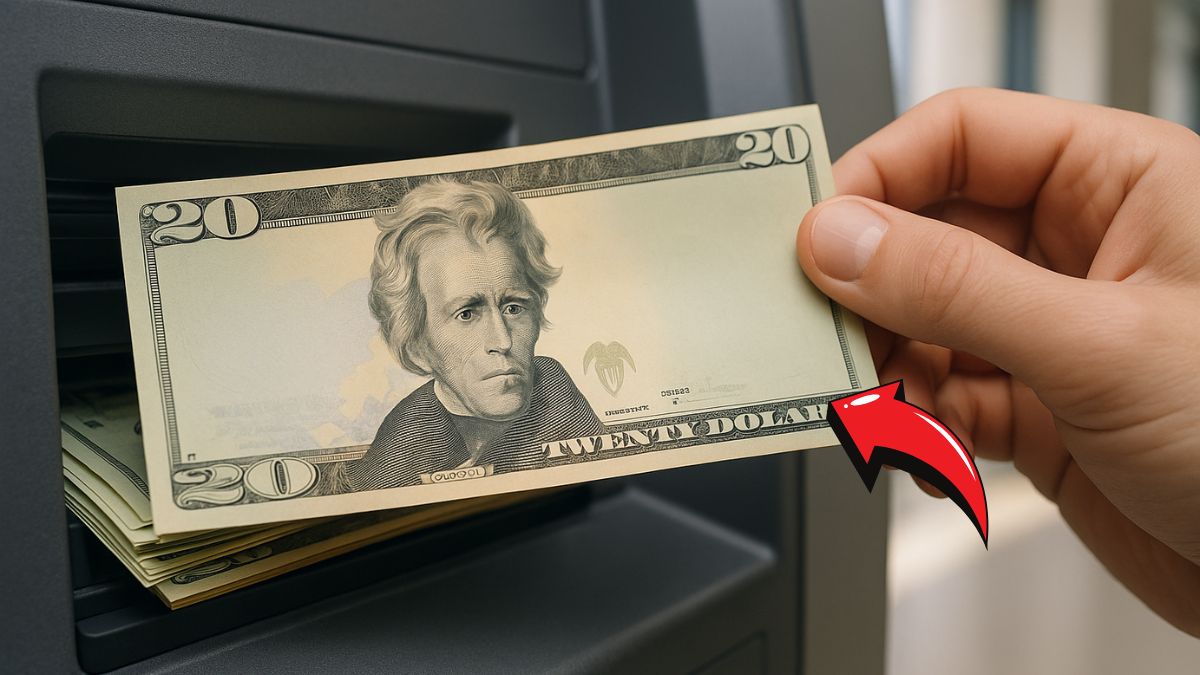In an unexpected twist of fate, a routine ATM withdrawal led to the discovery of a misprinted $20 bill, capturing the attention of currency collectors worldwide.
This rare find underscores the hidden value that everyday transactions can hold, especially when anomalies in currency printing come into play.
Understanding Currency Misprints
Currency misprints occur during the printing process at the Bureau of Engraving and Printing (BEP). These errors can range from minor ink smudges to significant misalignments or omissions.
While the BEP has stringent quality control measures, occasional errors slip through, making such notes highly sought after by collectors.
Common Types of Misprints
- Ink Smears: Excess or misplaced ink during printing.
- Misalignments: Incorrect alignment of printing plates leading to off-center images or text.
- Omitted Prints: Missing elements like serial numbers or seals.
- Overprints: Additional unintended prints on the note.
The Discovery: An Unusual $20 Bill
The misprinted $20 bill in question was obtained from an ATM in Mobile, Alabama.
Upon inspection, the note exhibited a unique misalignment: the serial number and Treasury seal were printed off-center, and part of the design overlapped unusually.
Such characteristics are indicative of a significant printing error, increasing the note’s rarity and value.
Market Value: From Face Value to Fortune
While the face value of the bill is $20, its market value among collectors is substantially higher due to its rarity. Similar misprinted notes have fetched impressive sums at auctions.
Notable Auction Sales
| Note Description | Sale Price | Year |
|---|---|---|
| $20 bill with Del Monte sticker misprint | $396,000 | 2021 |
| $20 bill with significant misalignment error | $3,750 | 2023 |
| $20 bill with ink smear and overprint | $1,200 | 2022 |
These figures illustrate the potential value of misprinted currency, especially when the error is unique and the note is in good condition.
The Collector’s Perspective
Currency collectors, or numismatists, place high value on error notes due to their rarity and the stories they tell.
A misprinted note like the one discovered can become a centerpiece in a collection, representing a tangible piece of printing history.
Authentication and Grading
Before a misprinted note can be sold or auctioned, it must be authenticated and graded.
Professional grading services assess the note’s condition, the significance of the error, and its overall appeal to collectors. A higher grade can significantly increase the note’s market value.
Selling a Misprinted Note
Owners of misprinted currency have several avenues for selling their notes:
- Auction Houses: Specialized auctions attract serious collectors willing to pay premium prices.
- Online Marketplaces: Platforms like eBay allow for broader exposure but may yield varying prices.
- Currency Dealers: Professional dealers can offer immediate sales, though potentially at lower prices than auctions.
The discovery of a misprinted $20 bill from an ATM serves as a compelling reminder of the hidden treasures that can exist in everyday life.
For collectors and enthusiasts, such finds are not just about monetary value but also about the unique stories and history they represent.
As interest in numismatics continues to grow, the allure of rare and error notes remains strong, encouraging individuals to pay closer attention to the currency that passes through their hands.
FAQs
What should I do if I find a misprinted bill?
If you discover a misprinted bill, handle it carefully to preserve its condition. Avoid folding or further damaging the note. Consult with a professional currency grader or dealer to assess its authenticity and potential value.
Are all misprinted bills valuable?
Not all misprinted bills hold significant value. The worth depends on the type and visibility of the error, the note’s condition, and demand among collectors. Minor errors may only fetch modest premiums, while unique or dramatic misprints can be highly valuable.
How can I authenticate a misprinted bill?
Authentication should be performed by reputable currency grading services or experienced dealers. They can verify the legitimacy of the error and provide a grade that reflects the note’s condition and rarity.
